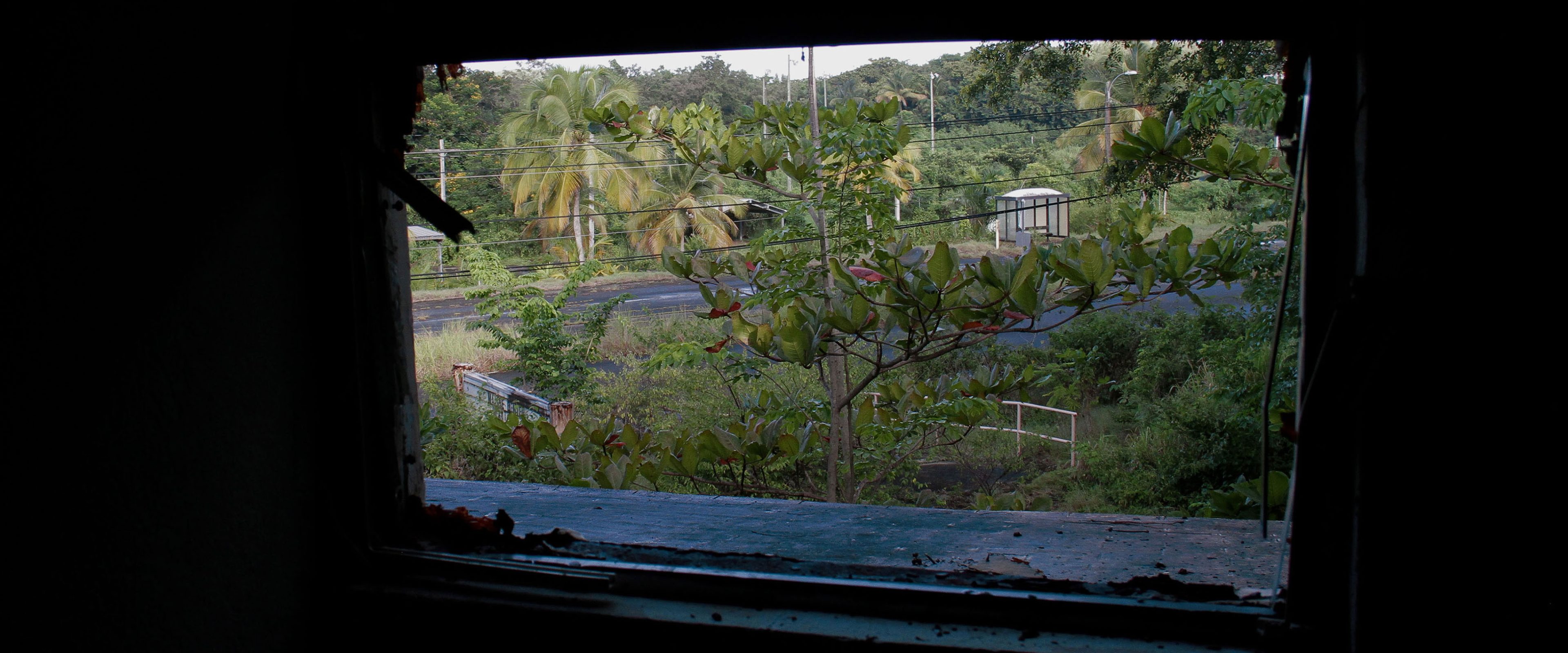When the Land Speaks is organized by the Eli and Edythe Broad Art Museum at Michigan State University and curated by Carla Acevedo-Yates and Steven L. Bridges, Associate Curators. Support for this exhibition is provided by the Alan and Rebecca Ross endowed exhibitions fund.
About the Exhibition
Post-Military Cinema was shot in Ceiba, Puerto Rico, in a theater that was once part of the (now-decommissioned) Roosevelt Roads US Naval Base, and is now occupied by bees. Beatriz Santiago Muñoz uses the mechanisms of cinema—light, projected image, sound, audience—to make visible the new functionality of the space. Her camera pans slowly, capturing every detail, color, and gesture. Afternoon light streams into the theater and projects rippling shadows from the surrounding forest that has flourished since the base closed in 2004. Contributing to the “soundtrack” are the rustling wind, the crackling fire in the beekeeper’s smoker (smoke calms honeybees so that the keepers can work on their hives), and the buzzing bees themselves.
The uncontrived, observational style of Santiago Muñoz’s videos aligns with the sensibility of documentary or ethnographic film while also blurring the boundaries between fact and fiction. Her work is rooted in intensive research and is deeply concerned with the tension between the documentarian’s desire for truth and the artist’s aesthetic concerns. Santiago Muñoz collaborates with nonactors, inviting them to reenact their daily rituals as well as events from popular culture, history, and indigenous mythology. For her, the camera is a tool capable of both revealing and fabricating reality.
Beatriz Santiago Muñoz (b. 1972, San Juan) lives and works in San Juan, Puerto Rico.
When the Land Speaks
This program presents the work of artists who explore the land as a space of conflict, which speaks through a changing, often fractured landscape. Addressing current issues such as resource extraction, sustainability, land rights, and displacement and dispossession, the works in this video series approach language as a form that does not limit itself to verbal communication. Instead, enunciation takes place in and through the territory: in the sounds and forms that water takes, in the rumbles and cracks of the earth, and in the ancestral rituals and practices derived from the landscape. In many ways, land and language have always been interconnected, each helping to define the other. But in our present day, there is a growing disconnect between much of human society and any sense of rootedness or care for the land that supports us. Confronting these realities, the artists in this series draw attention to the power of the landscape to express itself and communicate with us, and reflect on how our eroding connection to the land may also represent a fading understanding of ourselves.
